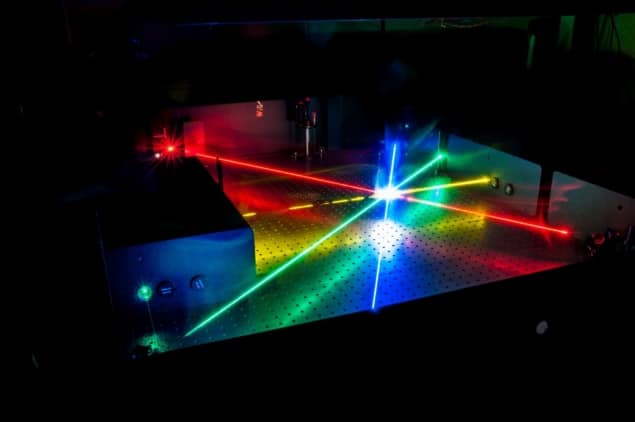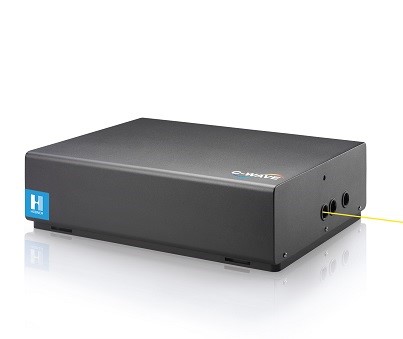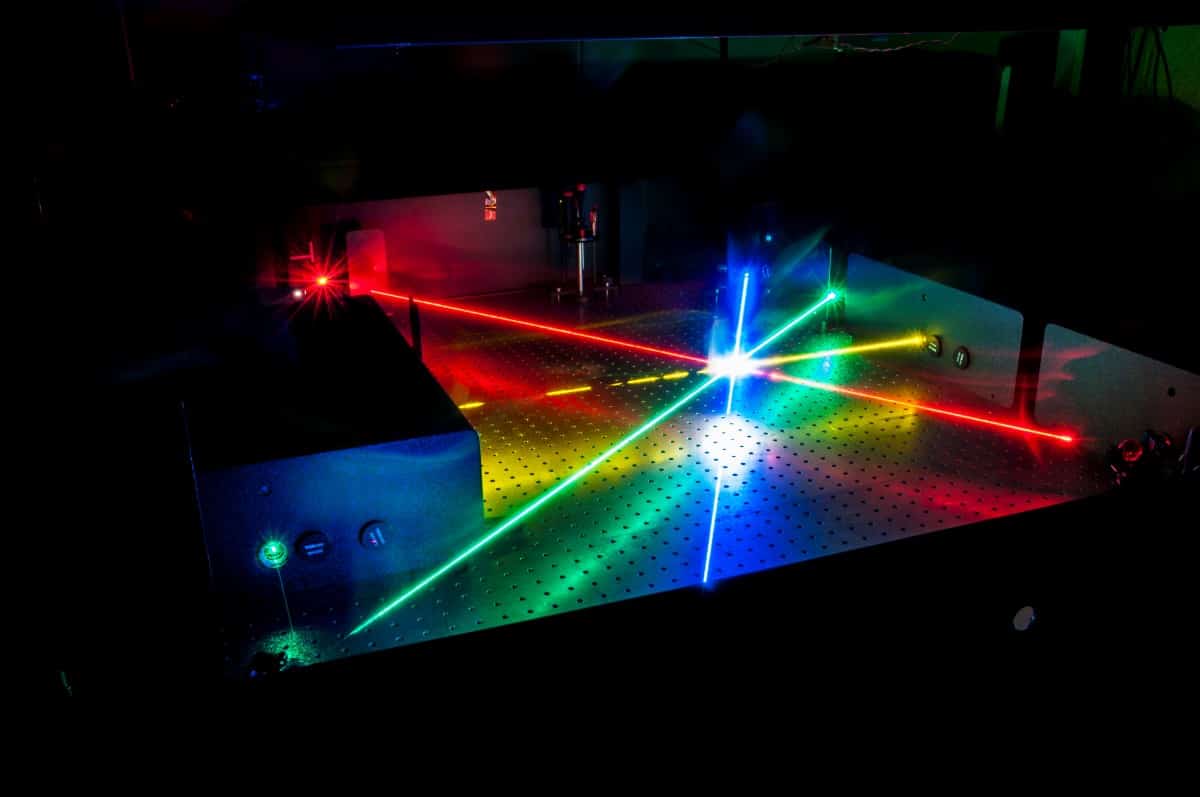Widely tuneable continuous-wave lasers based on OPO technology make it quicker and easier to characterize the internal energy structure of different qubit contenders

Physicists are still looking for the perfect quantum qubit: a two-level quantum system that can be precisely measured and controlled, while remaining unaffected by its environment. One of the most promising candidates are defect centres in solid-state materials, also known as colour centres, which have been found to emit a single photon per excitation event when excited by laser light of a particular frequency.
Most early attention has focused on nitrogen vacancy centres in diamond − which offer single-photon emission at room temperature − but they are not ideal for all applications because their asymmetric charge distribution makes them sensitive to local fluctuations in the electric field. Researchers are therefore investigating the properties of different colour centres in diamond, including silicon and germanium vacancies, as well as other material systems such as 2D hexagonal boron nitride (hBN).
But it can be difficult and time consuming to map out the energy levels in these delicate quantum systems. One important technique is photoluminescence excitation (PLE) spectroscopy, which measures the tiny optical signals produced by single-photon emitters when they are excited by continuous-wave (cw) laser light.
Wide frequency range
“Researchers typically want to measure the response from the sample over a wide frequency range,” explains Jaroslaw Sperling, a chemical physicist at Hübner Photonics. “You need a light source that generates light of a very well defined frequency, and that can easily be tuned across a wide range of frequencies.”
Sperling believes that cw light sources based on optical parametric oscillators (cw OPOs) offer the most effective solution. Instead of the gain medium inside a conventional laser, an OPO generates coherent light from a nonlinear optical crystal pumped by a high-performance laser. “OPOs first emerged about half a century ago,” says Sperling. “But commercial devices have until recently only operated in the infrared or in pulsed mode, since high peak powers are needed to drive the nonlinear process.”
Over the last few years, however, improved design techniques have yielded more sophisticated and more efficient nonlinear materials, such as periodically-poled lithium niobate, that can be phase-matched to the pump laser. A new generation of continuous-wave lasers also provides higher pump powers across the frequency spectrum, making it possible for the first time to produce widely tuneable cw OPOs in a turnkey system that delivers narrow-linewidth output at power levels of a few hundred milliwatts.
Big advantage
One of the big advantages of OPO technology, compared to a conventional cw tuneable laser, is that it provides more convenient control of the output wavelength. “There is no need to change the lasing medium or the laser cavity optics to achieve the desired wavelength, since in principle you can generate almost any colour in the visible range with a carefully chosen and suitably operated non-linear crystal,” explains Sperling.
OPO technology also makes it easier to measure the spectra from different samples with the same experimental set-up. “There is no need to change or realign any of the optical components, because the position and direction of the beam always stays the same,” says Niklas Waasem, a laser physicist at Hübner who specializes in quantum applications. “In contrast, other tunable lasers typically need re-alignment of the beam path or even different optics inside the laser after larger changes in the wavelength. With an OPO, researchers can scan through the full frequency range from a computer, which makes it much quicker to characterize different colour centres in the same sample, as well as different samples or material systems.”

The latest commercial systems – such as Hübner Photonics’ C-WAVE – combine this wide tunability with the narrow linewidth needed to resolve specific spectral resonances. OPOs also offer a higher spectral purity than equivalent tunable lasers, which ensures that the weak optical signals generated by atomic-scale defects are not obscured by amplified spontaneous light emission that lasers can generate at unwanted wavelengths. “The spectral purity of an OPO is a huge advantage for PLE experiments,” says Waasem.
Quantum researchers have been quick to recognize the benefits of continuous-wave OPOs for assessing the potential of different single-photon emitters. For example, scientists from the USA, Germany, China, Singapore, and Japan have exploited the C-WAVE platform to measure the photoluminescence spectra from silicon, germanium and tin vacancy centres in diamond, none of which suffer from the same sensitivity to electric field as nitrogen defects.
In room temperature experiments carried out on an ensemble of germanium vacancy centers, a broad sweep through the visible frequency range revealed a strong peak in the PLE spectrum at around 602 nm. More detailed experiments at 5 K explored the excitation dynamics of this specific single-photon emitter, showing that resonant fluorescence is only seen when the vacancy centre is also excited by a separate laser that can effectively act as an on/off switch.
The C-WAVE system has also been used by researchers in Germany to study individual defect centres in hBN, which are difficult to characterize because they have a wide range of transition energies across the entire visible spectrum. Measuring the photoluminescence intensity at more than 50 different excitation frequencies revealed the effect of phonon coupling on light emission, which offers a route to identifying the most efficient single-photon emitters in this 2D material.
Such early successes suggest that continuous-wave OPOs will become a popular choice for characterizing a range of different quantum systems. “The OPO concept can be used across different tuning ranges, which will allow for continuous adaption to new experimental requirements,” says Sperling. “Overall, we expect continuous-wave OPO technology to mature into a recognized choice among laser light sources that advance the rapidly evolving field of quantum research.”
Intensity modulation takes the next step
Once an ensemble of colour centres has been characterized using photoluminescence spectroscopy using a widely tuneable laser light source, researchers often turn to other optical techniques to probe the dynamics of the most promising candidates at a specific frequency. These experiments typically require a light source operating at a single well-defined wavelength, and which also enables the intensity of the light to be changed extremely rapidly.
Until recently the most common approach would be to combine a laser with an acousto-optical modulator. Now, however, the same performance can be achieved with modulated diode lasers, which makes the set-up more compact, more robust and easier to align. “Modulated diode lasers from Hübner Photonics are popular for initializing and reading out spin-states because they offer fast modulation capabilities, a high on/off extinction ratio, a high level of spectral purity, as well as an excellent Gaussian beam profile” comments Waasem.
